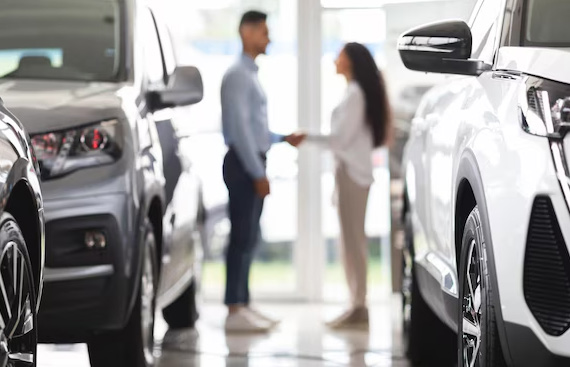Seasonal Trends in the Used Car Market: When to Sell for Maximum Value

Timing can make all the difference when it comes to selling your used car. While the condition of your car, its age, and demand for the model do matter, one thing that often gets overlooked is when you choose to sell. Like most industries, the used car market follows certain seasonal patterns. Understanding these trends can help you sell faster, and more importantly, at a better price.
In this blog, let’s take a look at the months when demand usually peaks, the best seasons to sell your car, and why timing matters more than you might think.
January - February: New Year, New Car Trend Fuels the Used Car Market
January and February are strong months for both new and used car activity. People often look to start the new year fresh, and for many, this includes upgrading their vehicle. As new car bookings rise, so does the demand for used cars.
Many car owners also tend to sell their existing vehicles during this time to make room for new purchases. This creates an active market, especially for popular models in good condition. So, if your car is well-maintained and timely serviced, a sale early in the year could be quicker and easier.
March and Financial Year-end Sales
March is when dealers and manufacturers push for higher year-end sales. New car buyers enjoy cash discounts, exchange offers, and financing benefits. This directly affects the used car market, too.
Many buyers look for pre-owned options due to reasons like budget, preference for an older model, interest in a specific variant, etc, and sellers benefit from this increase in interest. If you're planning to upgrade to a new car, this is also when dealers offer the best exchange bonuses, especially on popular models and special editions. That means you can get more value by trading in your old car at this time.
June and July: The Monsoon Slowdown
Selling a used car during the rainy season may not always be ideal. Between June and July, market activity tends to dip slightly as fewer people are keen to make vehicle purchases. Travel slows down, and even test drives can become a hassle in poor weather and road conditions.
Unless you're in a hurry to sell, it might be better to wait for a more active season. However, if your car is flood-damaged-free and comes with fresh tyres and a working air conditioning system, it may still attract good offers.
Early festive planning through August and September
The months just before the main festive season can also work well for sellers. Dealers and platforms begin stocking up inventory for the Diwali rush. Buyers who want to avoid the crowd or get ahead of the price hikes also start scouting for old vehicles in advance.
Cars listed during this time often receive quicker interest, especially if they’re in clean condition with valid paperwork and service history.
Festive Seasons are Peak Buying Periods: October - November
In India, the festive season, starting from Ganesh Chaturthi and running through Dussehra and Diwali, is one of the most active times for vehicle purchases. Buyers prefer to make high-value purchases during this period due to favourable loan offers, discounts, and a strong cultural belief that it's a lucky time.
As demand for new cars surges, people sell their old cars, which fuels the used car market. Many first-time buyers opt for used cars during this time, and dealers actively seek inventory to meet that demand. Selling your car just before or during the festive season can give you a pricing edge and quicker conversions.
Seasonal Trends for Selling Your Used Car
|
Period |
Why It’s a Good Time to Sell |
Buyer Behaviour |
|
October – November |
Festive season (Diwali, Dussehra), strong buyer sentiment, bonus season |
Buyers actively look for cars with festive offers & loans |
|
January – March |
Year-end discounts cleared, new year budget, financial year-end urgency |
High demand from first-time buyers and tax-saving buyers |
|
June – July |
Mid-year upgrades, new launches, monsoon-prep purchases |
People upgrade or switch to reliable used cars |
|
End of financial year (March) |
People use bonuses, claim depreciation or use them for tax planning |
Fleet and salaried buyers increase inquiries |
|
New Car launch months |
Buyers sell old cars to upgrade to newly launched models |
Surge in exchange inquiries and showroom trade-ins |
|
Dealerexchange festival drives |
Dealers offer good buyback values with new car bookings |
Higher footfall at dealerships, quick used car transactions |
Why Timing Your Old Car Sale Gives You Better Value
Used car prices change with the season, buyer demand, and market activity. If you list your car when demand is high, you’re more likely to get more enquiries and quote a better price confidently. This reduces the chances of having to settle for a lower offer just to close the deal quickly.
Planning to upgrade right after? Many dealerships offer special exchange bonuses or discounts during festive periods or launch seasons, helping you save on your next car.
So, if you're considering letting go of your old car, this could be the ideal time to sell car and get its best estimated value with a free online tool.
Final Thoughts
The best time to sell your used car is not just when you feel like it, but when the market is ready to offer you the most value. Whether it’s the start of the year, festive season, or during high-exchange offer periods, the right timing can put extra money in your pocket and help you upgrade without stretching your budget.
Keep your car well-maintained, gather all service and insurance documents, and pick the season wisely to sell your car in a smart way.
